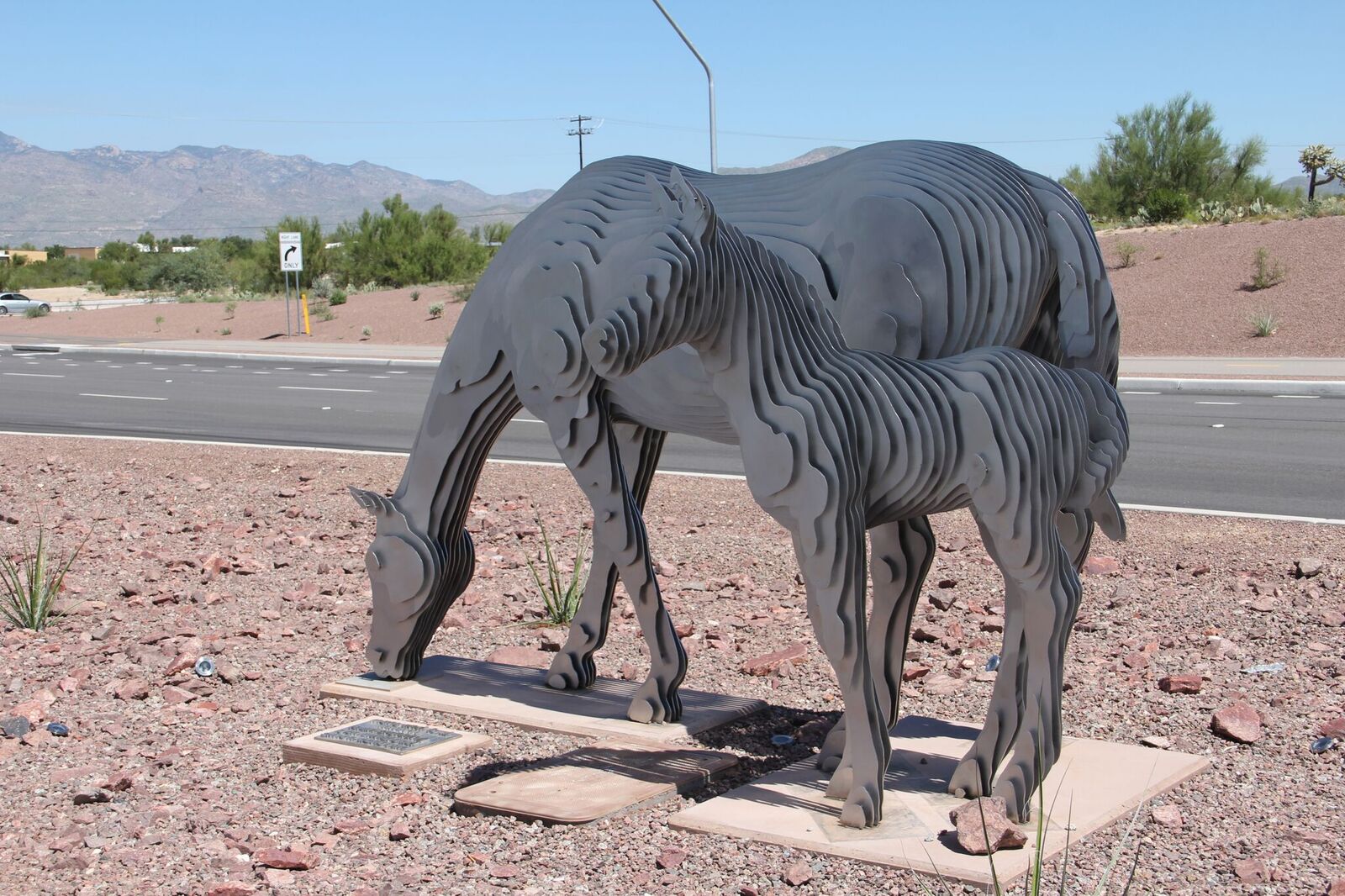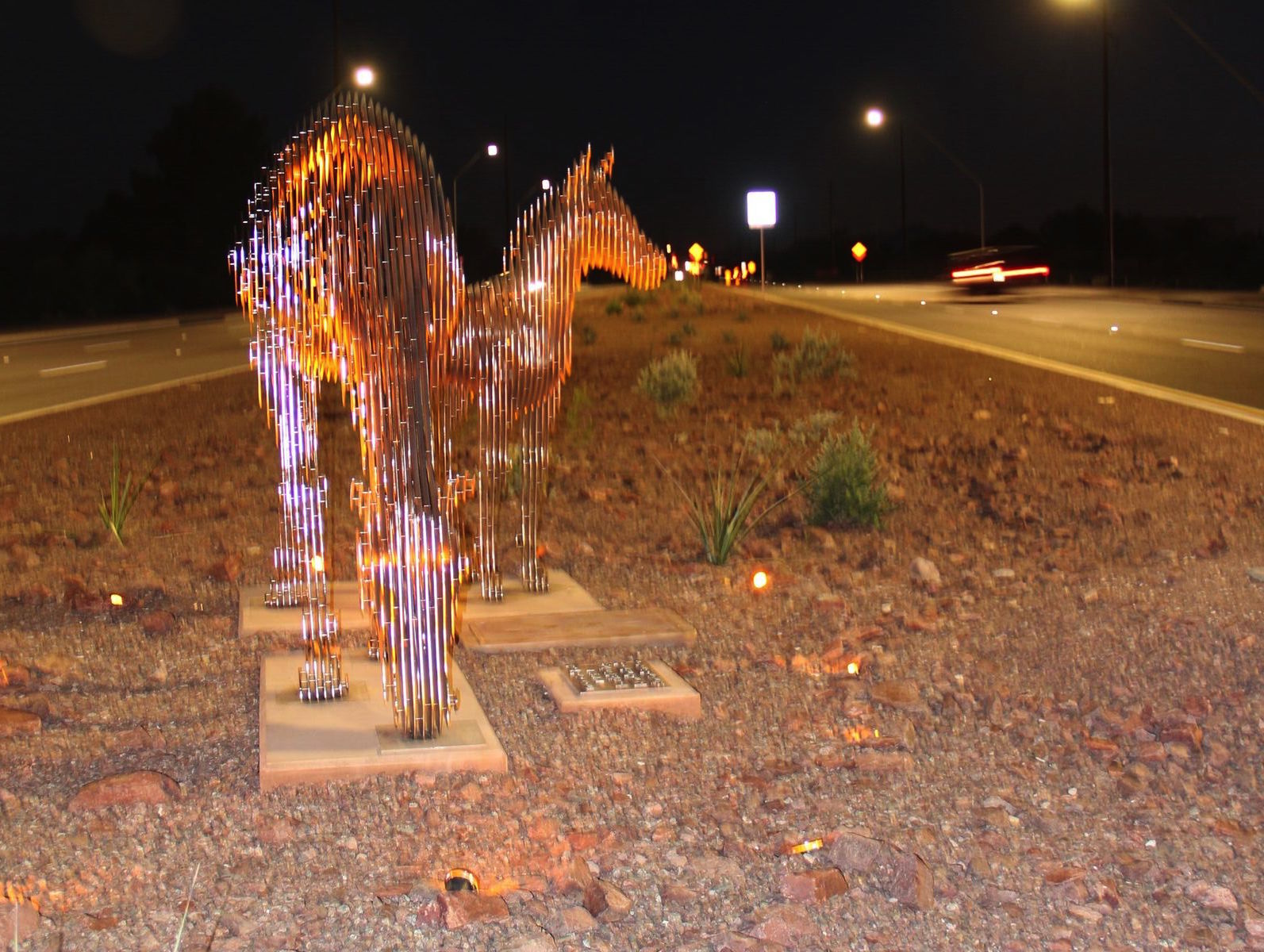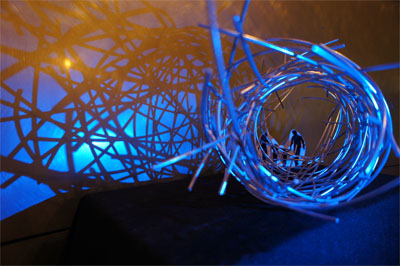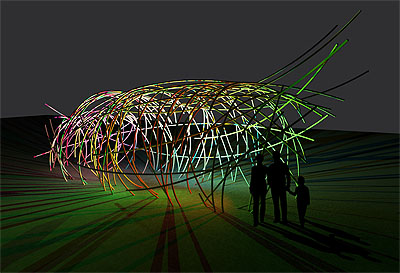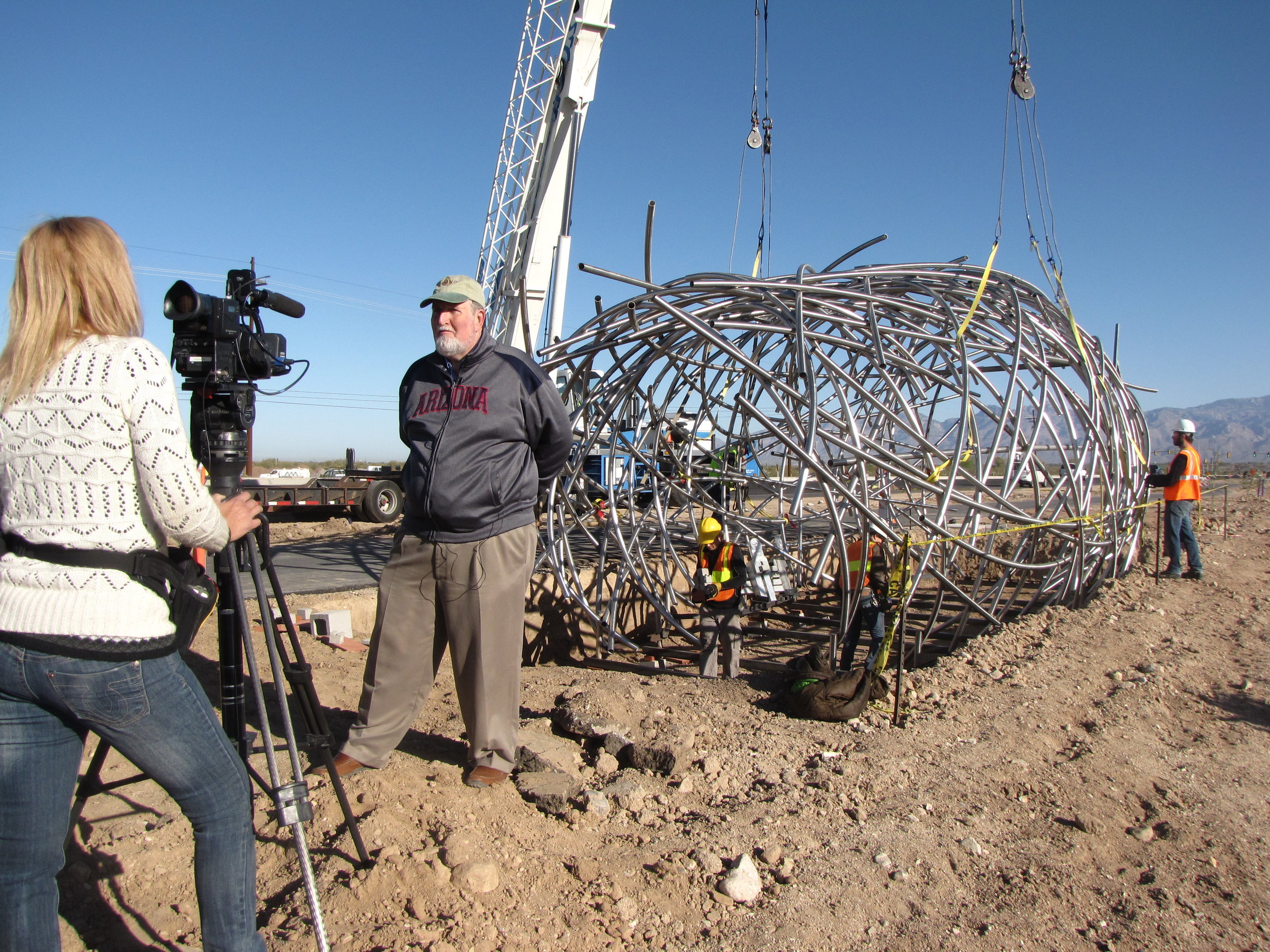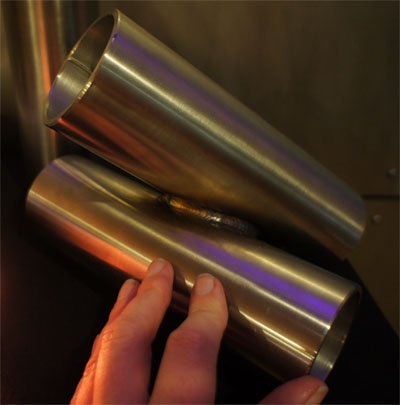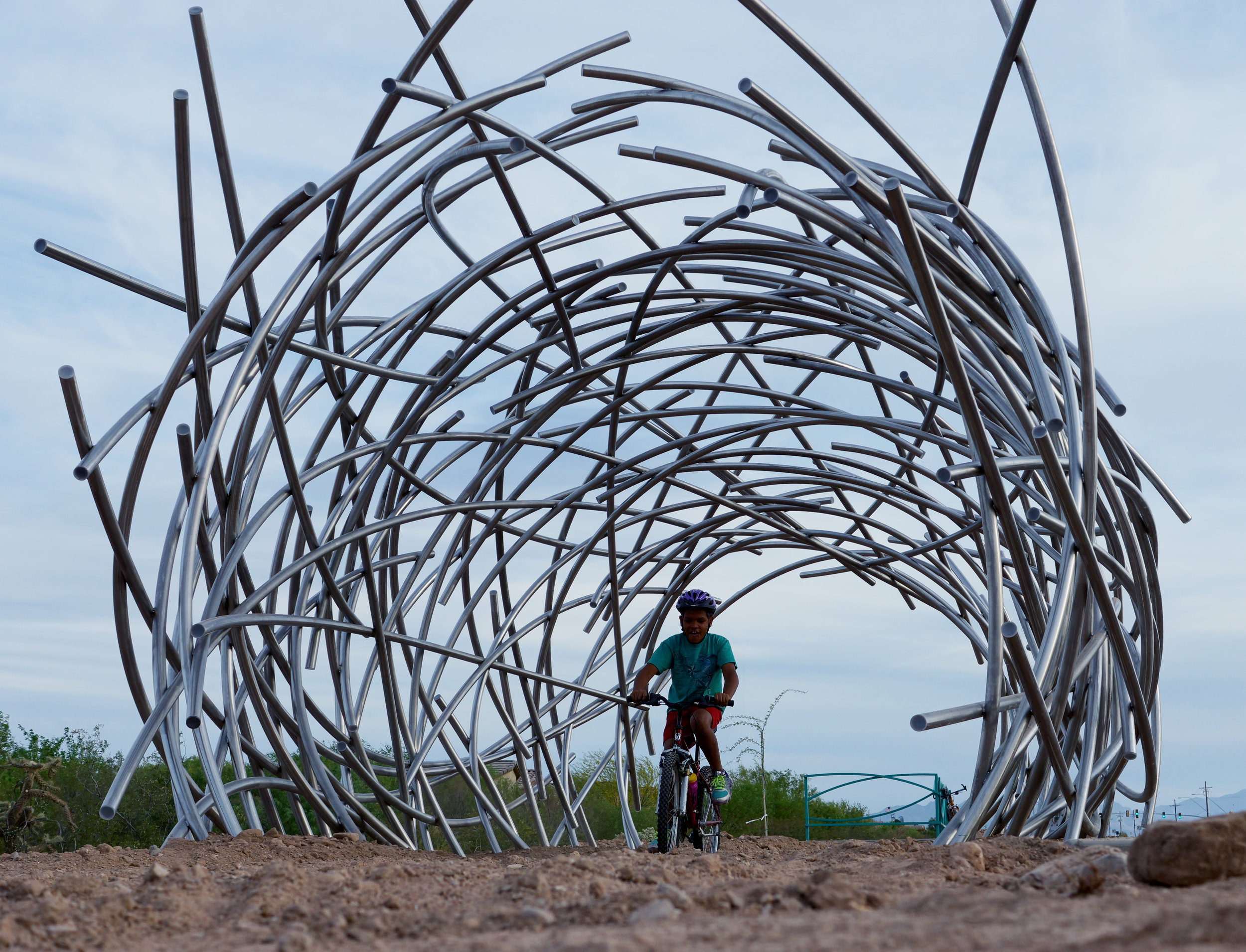Houghton Road Corridor Art
Public art is an important component of many City improvement projects that includes input from the community and reflects the neighborhood identity. All Regional Transportation Authority (RTA) projects allocate 1% of construction costs for public art.
Planning
Public artists and planners Nina Borgia-Aberle, Stephen Grede and Blessing Hancock were selected to work with the City, design team and community on the Houghton Road Corridor Public Art Master Planning Process, which began in November 2009. It was their goal to understand the roadway from a cultural, historical, environmental and aesthetic perspective. They collaborated with the community through attending Community Design Review Committee (CDRC) meetings, Houghton Road project open house meetings, neighborhood association meetings and community events. The planning process identified integrated art opportunities and developed theme guidelines for future project artists.
A tremendous amount of information was gathered from the community along with the artists’ own research. This information along with their recommendations is available in the “Houghton Road Public Art Master Plan Document”.
STONE PONEyS
Segment: Valencia Road to Mary Ann Cleveland Way
Artists: Lauri Slenning, Ben Olmstead & Simon Donovan
Location: East side of Houghton Road south of Jumping Cholla
Completion: April 2022
This sculpture is a play on the ubiquitous gabion structures that exist in Tucson’s washes and greater landscape. The horse forms are mirror images of Donovan, Olmstead & Slenning’s “Mare and Foal” sculpture at Houghton and 22nd Street, which are constructed from steel rod, steel plate and granite. Rock is piled into the cage structure to create the illusion of horses by the roadside drinking from a small body of water (integral colored concrete and glass). Three gabion benches of rock and glass are in the background. The spelling of the name “Stone Poneys” is meant as a tribute to local music icon Linda Ronstadt’s original band. This is a posthumous collaboration with artist Lauri Slenning, as the horse forms were based on her original Mare & Foal maquette.
ARTIST RAILING
Segment: Tanque Verde Road to Interstate 10
Artists: Blessing Hancock, Joe O’Connell and Nina Borgia-Aberle
Location: To be included in segments throughout the corridor
This unique interpretation of a pedestrian railing along the Houghton Road Corridor was inspired by flowing water. Located throughout the corridor at drainage crossings and areas needing safety railings, the form remains constant while the color changes in a gradation of four colors ranging from deep blue near Tanque Verde Wash to reflect flowing water, through blue-green hues in the central section of Houghton Road, to a vibrant green south of Valencia Road to reflect the open fields in the southern section. The art railings add a visual continuity and identity to the project area that encompasses more than a dozen major washes.
Mare and Foal
Segment: Broadway Boulevard to 22nd Street
Artists: Simon Donovan, Ben Olmstead and Lauri Slenning
Location: Houghton Road median south of 22nd Street
Completion: October 2016
The larger-than-life Mare and Foal are constructed of parallel stainless steel plates in a unique design that causes the horses to almost disappear from view at certain angles. They are lighted from below at night with a low-level amber light that does not affect the night sky. The sculpture is complemented by the image of grazing horses decorating the retaining wall north of 22nd Street on the east side of Houghton. Interest from the public in representing the significant presence of horses along this segment of the corridor inspired the artists.
COCOON
Segment: Irvington Road to Valencia Road
Artists: Blessing Hancock, Joe O’Connell and Nina Borgia-Aberle
Location: East side of Houghton just south of Drexel Road
Completion: April 2014
This large-scale sculpture was designed to be a destination on the walking path along Houghton Road. Pedestrians are able to walk through the sculpture, which is composed of stainless steel and is illuminated at night to allow for unique shadows to be cast as people walk through it. Shaped like a cocoon, the sculpture was inspired by nature and wildlife habitats, particularly butterfly and moth cocoons.



